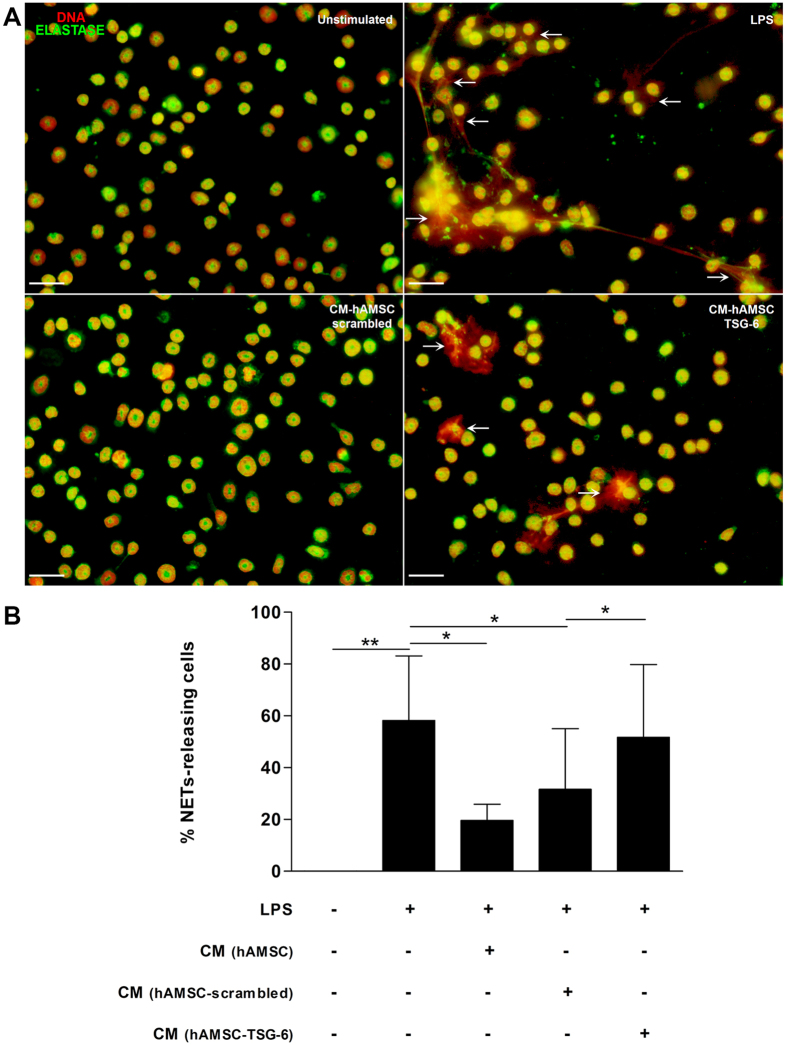Figure 5.
The conditioned medium (CM) from hAMSC decreases the release of NETs via TSG-6. Murine neutrophils were stimulated with LPS for NETs induction and incubated with the CM from hAMSC-scrambled or hAMSC-TSG-6. The siRNA-scrambled was used to corroborate that the specific silencing of TSG-6, did not affect the immunosuppressive effect of CM from hAMSC. After incubation, cells were stained for neutrophil elastase and the DNA was visualized with propidium iodide. Fluorescence micrographs of unstimulated neutrophils (upper-left panel), LPS-stimulated neutrophils (upper-right panel, LPS) and LPS-neutrophils cultured with the CM from hAMSC-scrambled (lower-left panel, CM-hAMSC-scrambled) or hAMSC-TSG-6 (lower-right panel, CM-hAMSC-TSG-6). The CM-hAMSC-scrambled decreases the release of NETs in the murine neutrophils (lower-left panel) respect the NETs in the LPS-stimulated neutrophils, while the CM-hAMSC-TSG-6 recovers the release of NETs in the neutrophils (lower-right panel). Scale bar represents 20μm (A). Graphic represents the percentage of NETs releasing cells. The area of NETs was quantified with the Image J program from five random fields in each condition. Bars represent the mean percentage of NETs releasing cells ± SD (n = 3), **p < 0.01 (unstimulated vs. LPS); *p < 0.05 (LPS vs. CM-hAMSC; LPS vs. CM-hAMSC-scrambled; CM-hAMSC-scrambled vs. CM-hAMSC-TSG-6); n.s. = not statistically significant (CM-hAMSC vs. CM- hAMSC-scrambled) (B).

